Brian Hooper Architect P/L

Principal and architect responsible for project inception through to construction completion including establishment of client brief and project aims and management of the consultancy team to achieve the desired client outcomes. Brian Hooper Architect is an innovative and award-winning architectural practitioner with diverse abilities and client base. Brian Hooper has more than a decade of experience in the architectural profession and as principal of his own practice, providing innovative and quality design solutions in Local Government projects, commercial, hospitality, educational and residential projects. In mid-2001 the practice relocated to Yeppoon from Brisbane to provide a stronger based face-to-face service to their existing Central Queensland Local Government and private clientele, and to strengthen its position in one of the state
Driving directions to Brian Hooper Architect P/L on map
Brian Hooper Architect P/L on Google Maps
Projects:
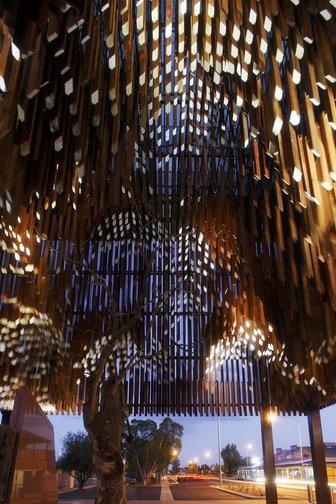
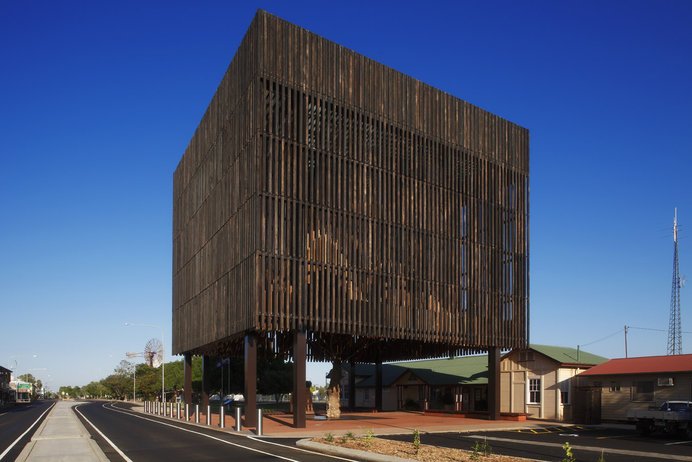
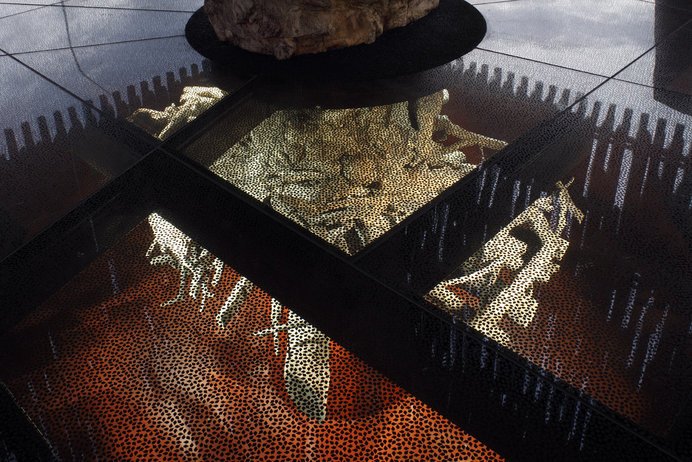
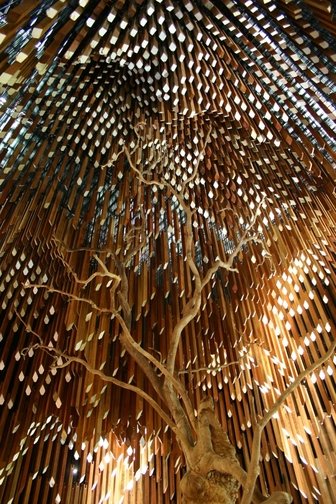
Tree of Knowledge Memorial
Barcaldine, 2009
The ideas for this project are generated by observations into the way human beings create and relive memories. The outcome from this observation is not a traditional building but an interactive place that allows us to remember the tree and the space around it. As a new experience in it’s own right the memorial also has the capacity to create new memories for it’s visitors. The scale of the structure and the form created by the hanging timbers is based directly on the extent of the tree’s canopy from the period around the 1890’s. The external timbers are “charcoaled” to create a veil around the memorial space. This finish and its form reference a place of memory and mourning. The “veil” provides hints to the form and movement inside but it does not fully reveal the impact of this space. This experience is saved for the visitor as they enter the shade of the “tree” and the technique personalises the experience for the visitor because it is something of a secret revealed. The veil and the glass roof also provide the very practical protection from long term direct exposure to wind driven rain and direct sun, which is required for the relic tree. Inside, the sculptural forms of the canopy extents create a vaulted effect appropriate for a place of memorial.
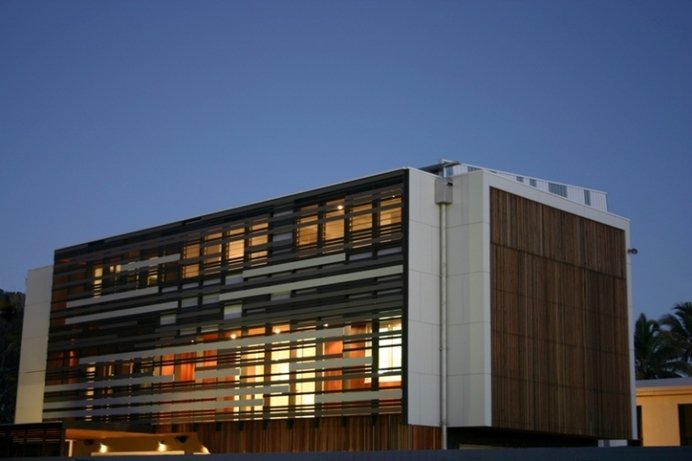
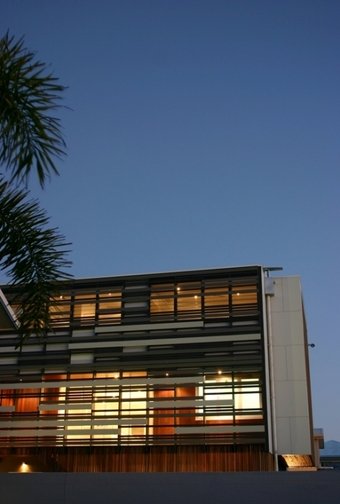
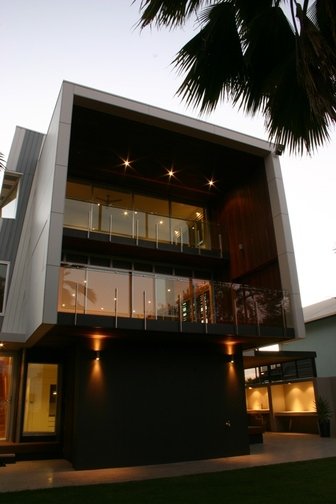
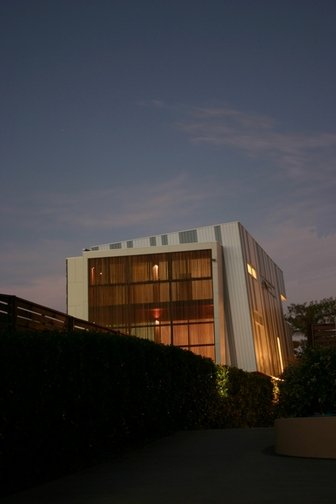
Busby Residence
Yeppoon, 2008
This private residence for a young family is located on a flat & narrow unvegetated battle axe site of approximately 500m2 nestled 100metres back from the dunal system of Farnborough beach in Yeppoon, providing outstanding views of; the Pacific Ocean to the east (framing the Keppel Island group), the coastline both north & south, and the hinterland to the west. Originally intended as a renovation to the existing residence, it quickly became apparent the client’s ambitious brief could not be achieved working within the framework of a somewhat ill-planned 2 storey brick residence. A primary factor in the spatial arrangement was consideration of privacy along the north and south boundaries to the neighbouring properties which required reduction in transparent openings whilst carefully providing a number of different spaces a connection to the framed views to the East, North and West on the upper 2 levels. The core of the house, expressed along the east west axis, is flanked north and south by service rooms and circulation spaces. Decks are provided at the east and west end of the core to provide outdoor living areas and solar screening respectively. The northern screened 2 storey fa’ade primarily acts as the house’s lungs, providing privacy to neighbouring structures, insect screening and natural ventilation. The screen utilises 3 different width timber battens and the openings were thoughtfully positioned on site to maximise views whilst still affording a required level of privacy. The residence attempts to minimise the scale of a 3 storey structure by cantilevering the upper 2 storeys over a heavy set recessed base. In addition to this vertical separation of material and texture, articulation of the southern wall is achieved with the simple incorporation of random vertical grey and white metal cladding. This element, possibly perceived as a folly, and somewhat incongruous with a residential language, successfully articulates & reduces the scale of a 3 storey, 7.5m high x 18.0 metre long wall. Statutory planning requirements dictated a stepped setback requirement to the south boundary. The decision to rake this wall 50 in lieu of stepping provided an opportunity to express a skewed element into a rather regimented and square form. Whilst the palate of materials and construction technique utilised is generally domestic in nature, the combined effect of the ‘custom ‘made’ and an element of crafted fabric and textures has produced an unconventional and thought provoking structure.
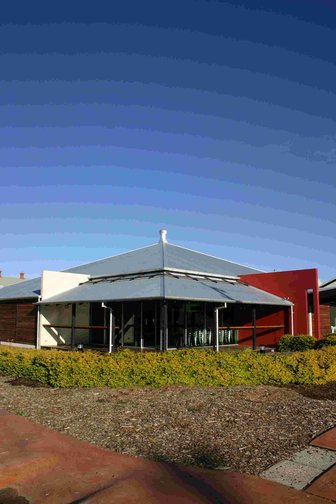
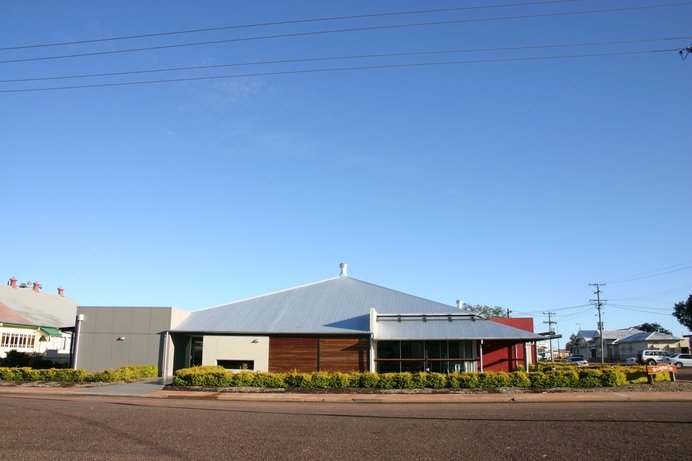
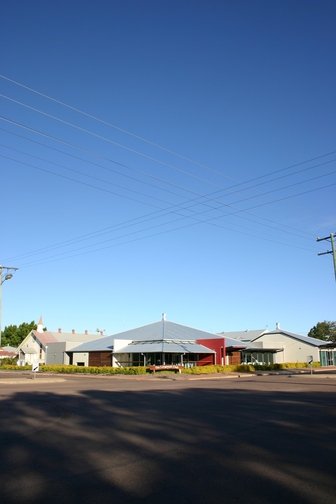
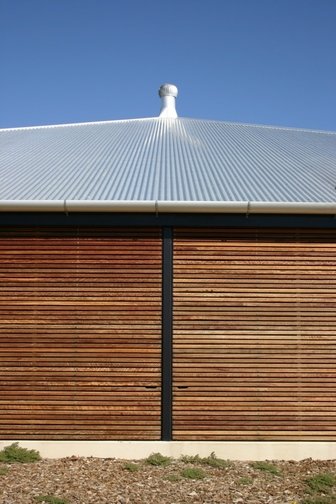
Longreach Club
Longreach, 2004
Born from the ashes of the razed 100 year old grazier’s (cocky’s) club, the Longreach Club attempts to reinstate a building derived from the traditional ‘monolithic’ homestead roof form that reflects & compliments its surrounds in a contemporary manner. The 1800m2 north-east facing corner site sits prominently in the centre of Longreach in Central Western Queensland. Great care was taken to handle both street elevations within its neighbouring context reflecting a more traditional rural vernacular without having to crudely replicate period detailing & styling. Externally the juxtaposition of zincalume sheeting for both wall and roof cladding, timber battens, rendered blockwork and compressed F.C. sheeted walls provided relief and articulation to the street elevations. Internally plasterboard, commercial carpet tiles, timber flooring, ceramic tiles, vinyl flooring, natural timber veneers, and patterned stainless steel provided a stately yet contemporary finish. With no contingency allowed for by the client, any cost variations during construction were offset by savings in design changes, thus neutralising a potential blowout / shortfall at completion. With a total GFA of 820m2, the final construction rate of less than $1,600/m2 (including fitout) is incredibly efficient in comparison to similar commercial projects of its type. With a close relationship between Client, Architect and Builder, the Longreach Club is testimony to good design outcomes versus budgetary constraints, client trust in their Architect, and builder competence.


